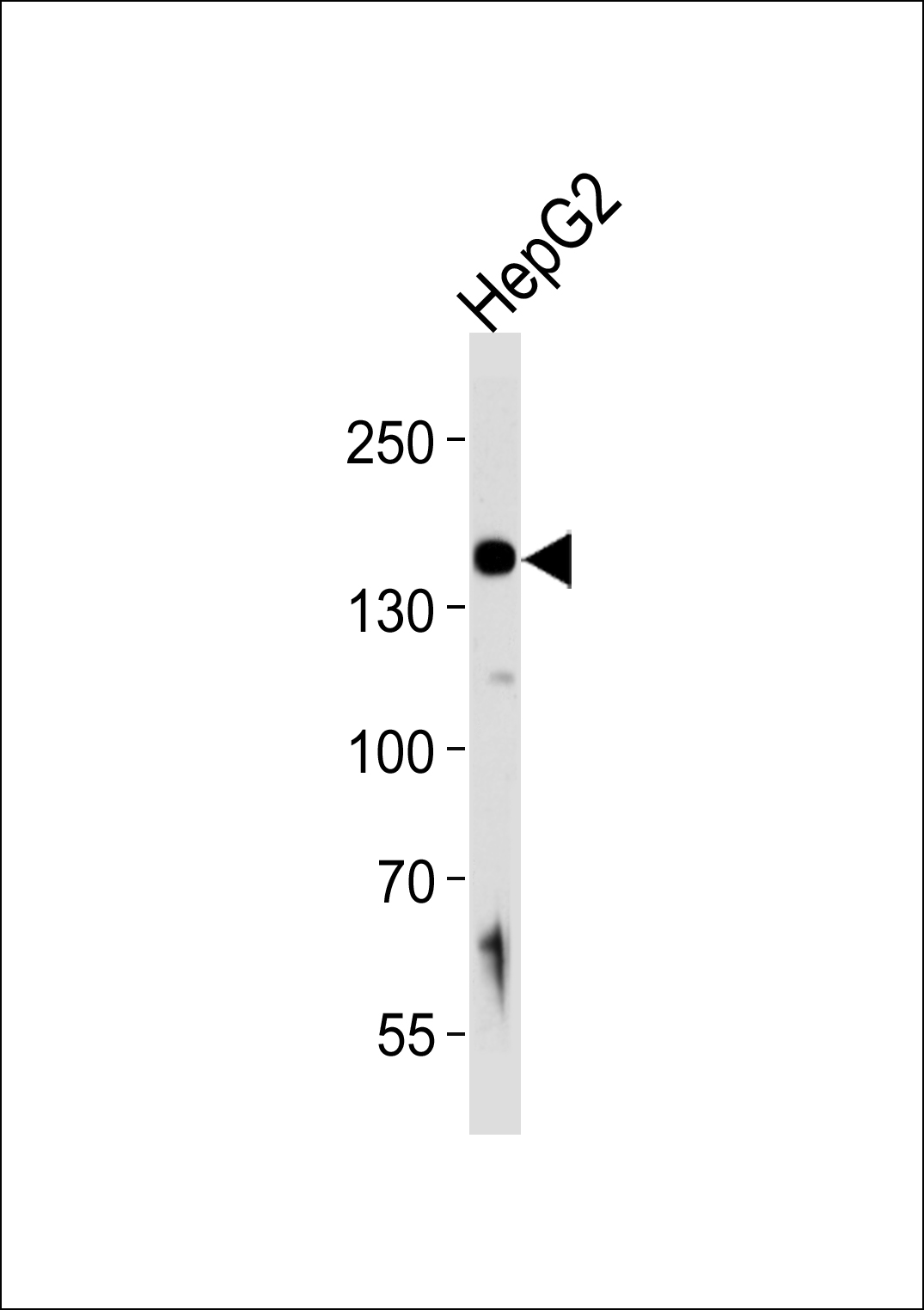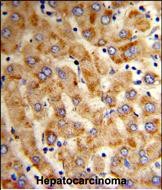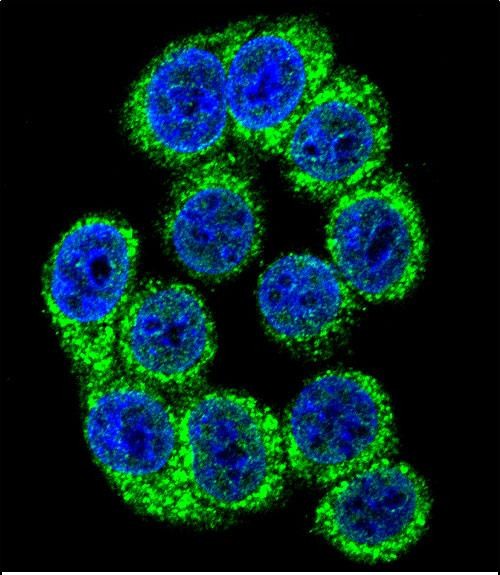HYOU1 Antibody (Center)
Purified Rabbit Polyclonal Antibody (Pab)
- 产品详情
- 实验流程
- 背景知识
Application
| IHC-P, IF, WB, E |
|---|---|
| Primary Accession | Q9Y4L1 |
| Reactivity | Human |
| Host | Rabbit |
| Clonality | Polyclonal |
| Isotype | Rabbit IgG |
| Calculated MW | 111335 Da |
| Antigen Region | 274-303 aa |
| Gene ID | 10525 |
|---|---|
| Other Names | Hypoxia up-regulated protein 1, 150 kDa oxygen-regulated protein, ORP-150, 170 kDa glucose-regulated protein, GRP-170, HYOU1, GRP170, ORP150 |
| Target/Specificity | This HYOU1 antibody is generated from rabbits immunized with a KLH conjugated synthetic peptide between 274-303 amino acids from the Central region of human HYOU1. |
| Dilution | IHC-P~~1:100~500 IF~~1:10~50 WB~~1:1000 E~~Use at an assay dependent concentration. |
| Format | Purified polyclonal antibody supplied in PBS with 0.09% (W/V) sodium azide. This antibody is prepared by Saturated Ammonium Sulfate (SAS) precipitation followed by dialysis against PBS. |
| Storage | Maintain refrigerated at 2-8°C for up to 2 weeks. For long term storage store at -20°C in small aliquots to prevent freeze-thaw cycles. |
| Precautions | HYOU1 Antibody (Center) is for research use only and not for use in diagnostic or therapeutic procedures. |
| Name | HYOU1 |
|---|---|
| Synonyms | GRP170, HSPH4 {ECO:0000303|PubMed:186636 |
| Function | Has a pivotal role in cytoprotective cellular mechanisms triggered by oxygen deprivation. Promotes HSPA5/BiP-mediated ATP nucleotide exchange and thereby activates the unfolded protein response (UPR) pathway in the presence of endoplasmic reticulum stress (By similarity). May play a role as a molecular chaperone and participate in protein folding. |
| Cellular Location | Endoplasmic reticulum lumen. |
| Tissue Location | Highly expressed in tissues that contain well- developed endoplasmic reticulum and synthesize large amounts of secretory proteins. Highly expressed in liver and pancreas and lower expression in brain and kidney. Also expressed in macrophages within aortic atherosclerotic plaques, and in breast cancers |
For Research Use Only. Not For Use In Diagnostic Procedures.
Provided below are standard protocols that you may find useful for product applications.
BACKGROUND
HYOU1 belongs to the heat shock protein 70 family. The protein is thought to play an important role in protein folding and secretion in the ER. Since suppression of the protein is associated with accelerated apoptosis, it is also suggested to have an important cytoprotective role in hypoxia-induced cellular perturbation. This protein has been shown to be up-regulated in tumors, especially in breast tumors, and thus it is associated with tumor invasiveness. This signal peptide-lacking protein, which is only 3 amino acids shorter than the mature protein in the ER, is thought to have a housekeeping function in the cytosol. In rat, this protein localizes to both the ER by a carboxy-terminal peptide sequence and to mitochondria by an amino-terminal targeting signal.
REFERENCES
Kitao,Y., Matsuyama,T. Antioxid. Redox Signal. 9 (5), 589-595 (2007)
Bando,Y., Ogawa,S. Am. J. Physiol., Cell Physiol. 278 (6), C1172-C1182 (2000)
终于等到您。ABCEPTA(百远生物)抗体产品。
点击下方“我要评价 ”按钮提交您的反馈信息,您的反馈和评价是我们最宝贵的财富之一,
我们将在1-3个工作日内处理您的反馈信息。
如有疑问,联系:0512-88856768 tech-china@abcepta.com.























 癌症的基本特征包括细胞增殖、血管生成、迁移、凋亡逃避机制和细胞永生等。找到癌症发生过程中这些通路的关键标记物和对应的抗体用于检测至关重要。
癌症的基本特征包括细胞增殖、血管生成、迁移、凋亡逃避机制和细胞永生等。找到癌症发生过程中这些通路的关键标记物和对应的抗体用于检测至关重要。 为您推荐一个泛素化位点预测神器——泛素化分析工具,可以为您的蛋白的泛素化位点作出预测和评分。
为您推荐一个泛素化位点预测神器——泛素化分析工具,可以为您的蛋白的泛素化位点作出预测和评分。 细胞自噬受体图形绘图工具为你的蛋白的细胞受体结合位点作出预测和评分,识别结合到自噬通路中的蛋白是非常重要的,便于让我们理解自噬在正常生理、病理过程中的作用,如发育、细胞分化、神经退化性疾病、压力条件下、感染和癌症。
细胞自噬受体图形绘图工具为你的蛋白的细胞受体结合位点作出预测和评分,识别结合到自噬通路中的蛋白是非常重要的,便于让我们理解自噬在正常生理、病理过程中的作用,如发育、细胞分化、神经退化性疾病、压力条件下、感染和癌症。








